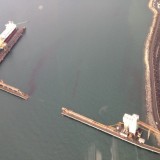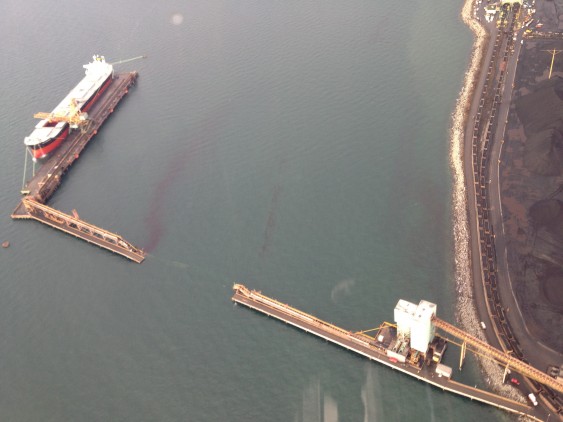Read this op-ed by the BC NDP’s Energy Critic John Horgan and Environment Critic Rob Flemming, promising a tougher stance on natural gas fracking and related water issues. (Dec 13, 2012)
British Columbia needs to have a strong environmental lens guiding the development of our energy resources. As we transition to a sustainable, low-carbon economy, we must recognize the need for the responsible development of existing energy sources.
While British Columbia has a well-established natural gas industry and an existing network of natural gas pipelines, we must approach further expansion with care.
New Democrats have met with First Nations, local governments, and residents throughout northeast B.C. While there are questions and concerns about hydraulic fracturing, or fracking, there is also much agreement that extraction and liquefied natural gas (LNG) projects can be done with greater consideration for environmental protection.
That’s why Adrian Dix and B.C.’s New Democrats have put forward a plan that we believe will ensure long-term sustainability and environmental stewardship, greater public accountability, and best practices in the industry, particularly when it comes to fracking.
The first point of our plan would be to appoint an expert panel to conduct a broad public review of fracking, including public hearings and consultations with First Nations, local communities, industry, environmental groups, and citizens. The panel will ensure British Columbians get B.C.-specific information they can trust.
Second, we would make immediate changes to protect B.C.’s water resources, including consolidating authority for water licensing within one public body; improving water mapping, monitoring and public reporting; and reviewing current water pricing practices.
Many British Columbians are raising valid questions and concerns about water use and the impacts of fracking. Our call for a review of water management stands in stark contrast to the B.C. Liberal government, which has largely failed to put the necessary protections in place.
The B.C. Liberal government has dragged its feet on introducing the Water Sustainability Act which promised to “respond to current and future pressures on water, and position B.C. as a leader in water stewardship.” While draft legislation was promised years ago, it likely won’t see the light of day before the end of the Liberals’ term in office.
A number of B.C. First Nations are in favour of supporting LNG development under the right circumstances. For example, while the Fort Nelson First Nation has criticized the Liberal government for “irresponsible, unsustainable water use” in the shale gas industry, they acknowledge the economic benefits of the natural gas industry and believe “that shale gas development can occur without full-scale damage to our rivers, lakes, and streams”.
Our plan would also include extending funding for the Farmers’ Advocate office to ensure landowners in the natural gas fields have the credible, independent support they need to deal with the gas industry.
And finally, we must find ways to align expansion in gas development and greenhouse gas emissions with the targets set out in the province’s Climate Action Plan. The Liberals have largely failed to take responsibility on this front, opting instead to change the definition of what constitutes “clean” energy rather than tackle the tough issues.
New Democrats can support LNG exports while opposing the Enbridge Northern Gateway Pipeline because LNG is a much safer alternative to oil. While any incident would be a major concern, the safety record of gas pipelines, LNG terminals, and LNG tankers shows there have been very few leaks. And unlike raw bitumen, which would cause a devastating environmental catastrophe in the case of a major spill off B.C.’s north coast, liquefied natural gas would evaporate and dissipate.
A New Democrat government would approach the development of safer, cleaner energy sources in an environmentally-responsible way. By subjecting each project to a rigorous environmental assessment and having the proper protections in place, we would make certain the best interests of our province are represented. This will enhance our economic development and indigenous peoples’ self-determination, and create a sustainable environment for the future.
Read original post: http://www.straight.com/news/rob-fleming-and-john-horgan-fracking






